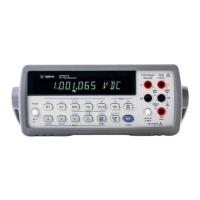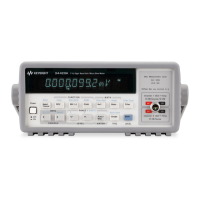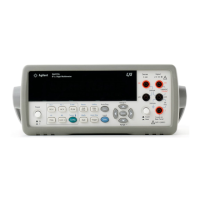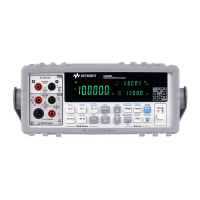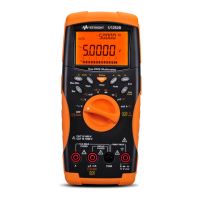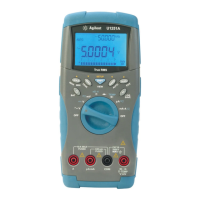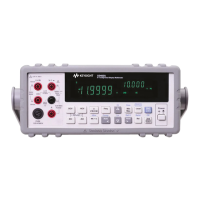276 Chapter 7 BASIC Language for the 3458A
itself from the catalog listing of subprograms (CAT command).
SCRATCH The SCRATCH command deletes (scratches) all 3458A subprograms,
variables, and arrays from internal memory. It also deletes all name
definitions from the catalog listing (CAT command). If SCRATCH is
executed when a subprogram is running, an error is generated but the
subprogram is not purged from memory.
CAT The CAT (catalog) command lists the names of all 3458A subprograms,
simple variables, stored states, and arrays that are presently stored in internal
memory. If there are no more arrays or subprograms to be listed, the CAT
command returns the word "DONE". Refer to chapter 3 for more information
on stored states. The format for the catalog is:
For Subprograms:SUB sub_name
For Integer Arrays:IARRAY array_name
For Real Arrays:RARRAY array_name
For Stored States:STATE state_name (non-volatile memory)
For Simple Variables:INT variable_name
REAL variable_name
The following program shows how to use the CAT command.
10 DIM A$[80]
20 OUTPUT 722; "CAT"
30 REPEAT
40 ENTER 722; A$
50 PRINT A$
60 UNTIL A$="DONE"
70 END
LIST The LIST command allows you to list the specified subprogram. Keep in
mind that you cannot edit subprograms from the front panel; you must edit
them from your system controller. The following program shows how to list
the subprogram DMM_CONF to your system controller.
10 DIM A$[100]
20 OUTPUT 722; "LIST DMM_CONF"
30 REPEAT
40 ENTER 722; A$
50 PRINT A$
60 UNTIL A$="SUBEND"
70 END
COMPRESS The COMPRESS command removes the text of the specified subprogram
from internal memory (the subprogram is no longer stored in non-volatile
memory and is lost when power is removed). This saves space in internal
memory but eliminates the ability to list (LIST command) the subprogram.
The COMPRESS command should be used only after the subprogram has
been debugged and tested.
